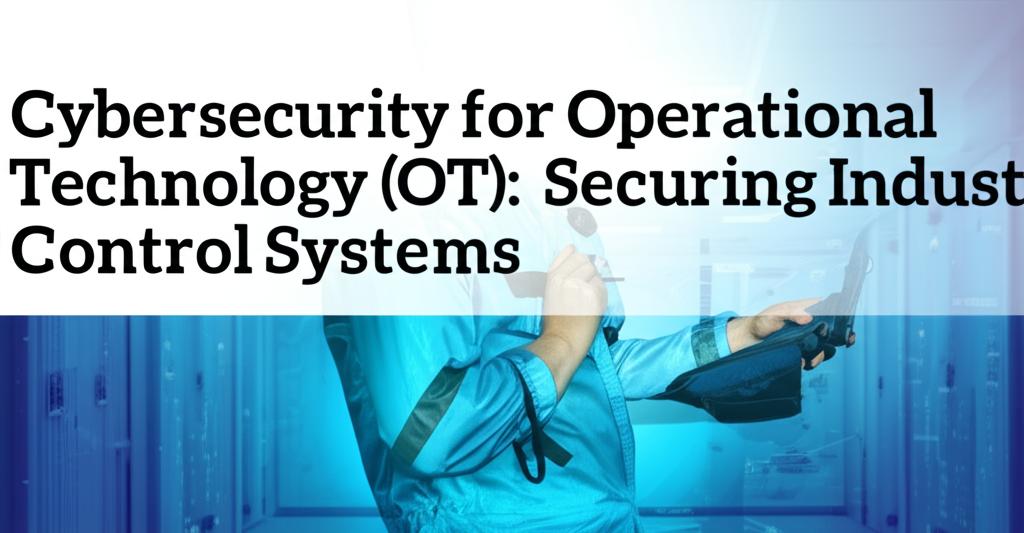Operational Technology (OT) and Industrial Control Systems (ICS), the backbone of critical infrastructure and industrial processes, are increasingly interconnected with IT networks and the internet. This convergence, while driving efficiency through real-time data analysis and automation, significantly expands the attack surface, exposing previously isolated systems to a growing barrage of cyber threats. Unlike traditional IT security, where confidentiality is often paramount, OT security must prioritize safety and availability, as breaches can have severe physical consequences, impacting operations, the environment, and even human lives.
The Evolving Threat LandscapeThe OT cybersecurity landscape in 2025 is marked by escalating threats. Ransomware attacks continue to plague the industrial sector, particularly manufacturing, often leveraging supply chain vulnerabilities. Reports indicate a sharp rise in organizations experiencing intrusions impacting their OT systems, with attackers exploiting weak perimeter defenses, outdated legacy systems, and vulnerabilities in IT-centric remote access technologies like VPNs, especially in regions aggressively adopting Industry 4.0.
Nation-state actors pose a significant threat, targeting critical infrastructure sectors like energy, water, and transportation as part of geopolitical strategies. These actors may aim to preposition themselves for future disruptive attacks or cause immediate operational failure. The interconnectedness between IT and OT systems is frequently exploited, with attackers using compromised IT networks as a stepping stone into the more sensitive OT environment. Furthermore, the proliferation of Industrial Internet of Things (IIoT) devices adds billions of potential entry points, each needing secure management.
Key Challenges in Securing OT/ICSSecuring OT environments presents unique challenges:
- Legacy Systems: Many OT environments rely on outdated hardware and software ("legacy systems") that were not designed for connectivity and lack modern security features. Patching or updating these systems can be difficult or impossible without risking operational disruption, leaving known vulnerabilities unaddressed.
- IT/OT Convergence Complexity: Integrating IT and OT systems blurs network boundaries and expands the attack surface. While IT security often prioritizes confidentiality and rapid patching, OT requires a focus on operational continuity and safety, meaning IT security tools and practices cannot simply be transplanted without adaptation. Applying conventional IT security can inadvertently disrupt critical processes.
- Limited Visibility and Asset Management: OT environments are often complex, geographically dispersed, and contain a mix of specialized devices from various vendors. Gaining a comprehensive inventory of all assets and understanding their communication patterns is crucial but difficult, potentially leaving critical vulnerabilities hidden.
- Skills Gap: There is a worldwide shortage of professionals with expertise in both OT processes and cybersecurity. IT teams may lack understanding of OT systems' operational constraints, while OT personnel may lack awareness of current cybersecurity best practices.
- Connectivity Risks: The increasing use of remote access, cloud services, and IoT devices, while beneficial for operations, introduces new vectors for attack that must be carefully managed.
A robust OT/ICS cybersecurity posture requires a multi-faceted approach:
- Comprehensive Asset Inventory: You cannot protect what you don't know you have. Establishing and maintaining a detailed inventory of all OT assets (hardware, software, firmware versions) is the fundamental first step.
- Vulnerability Management: Implement a risk-based approach to manage vulnerabilities. Prioritize patching based on exploitability and potential operational impact, especially focusing on Known Exploited Vulnerabilities (KEVs), particularly those linked to ransomware or insecure internet exposure. Since patching isn't always feasible in OT, mitigation strategies are essential.
- Network Segmentation: Segmenting OT networks from IT networks and segregating critical control systems within the OT environment helps contain potential breaches and limits an attacker's ability to move laterally. Utilizing models like the Purdue Model and implementing firewalls designed for OT can enforce this segmentation.
- Secure Access Control: Enforce strict access controls using principles of least privilege. Implement Multi-Factor Authentication (MFA) wherever possible, especially for remote access. Secure remote access solutions specifically designed for OT environments are crucial, moving away from reliance solely on traditional IT VPNs. Improve password hygiene and manage credentials effectively.
- Continuous Monitoring and Threat Detection: Deploy OT-specific monitoring tools like Security Information and Event Management (SIEM) systems and Intrusion Detection Systems (IDS) tailored for industrial protocols. Real-time monitoring, potentially enhanced by AI and machine learning, helps detect anomalies and malicious activity early.
- Incident Response Planning: Develop, maintain, and regularly test a formalized incident response plan specific to OT environments. This plan should detail steps for containment, eradication, recovery, and communication during and after an incident.
- Physical Security: Do not overlook physical access controls to sensitive areas housing OT equipment, as physical tampering can bypass network security measures.
- Supply Chain Security: Scrutinize the security practices of third-party vendors and suppliers, as they can be a source of compromise. Ensure components are secure throughout their lifecycle.
- Security Awareness and Training: Train both IT and OT personnel on OT-specific security risks and best practices. Foster collaboration between IT and OT teams.
- Regulatory Compliance: Stay informed about and adhere to relevant cybersecurity regulations and standards (e.g., NIS2, ISA/IEC 62443, NIST CSF, CIRCIA), which are increasingly focusing on OT security.
Trends like the cautious adoption of AI and machine learning for enhanced threat detection and predictive analytics, the move towards Zero-Trust architectures, and heightened regulatory scrutiny will continue to shape OT cybersecurity in 2025. Protecting these vital systems requires ongoing investment, a proactive stance, and a holistic strategy that integrates technology, processes, and skilled personnel to ensure the safety, reliability, and resilience of industrial operations.

